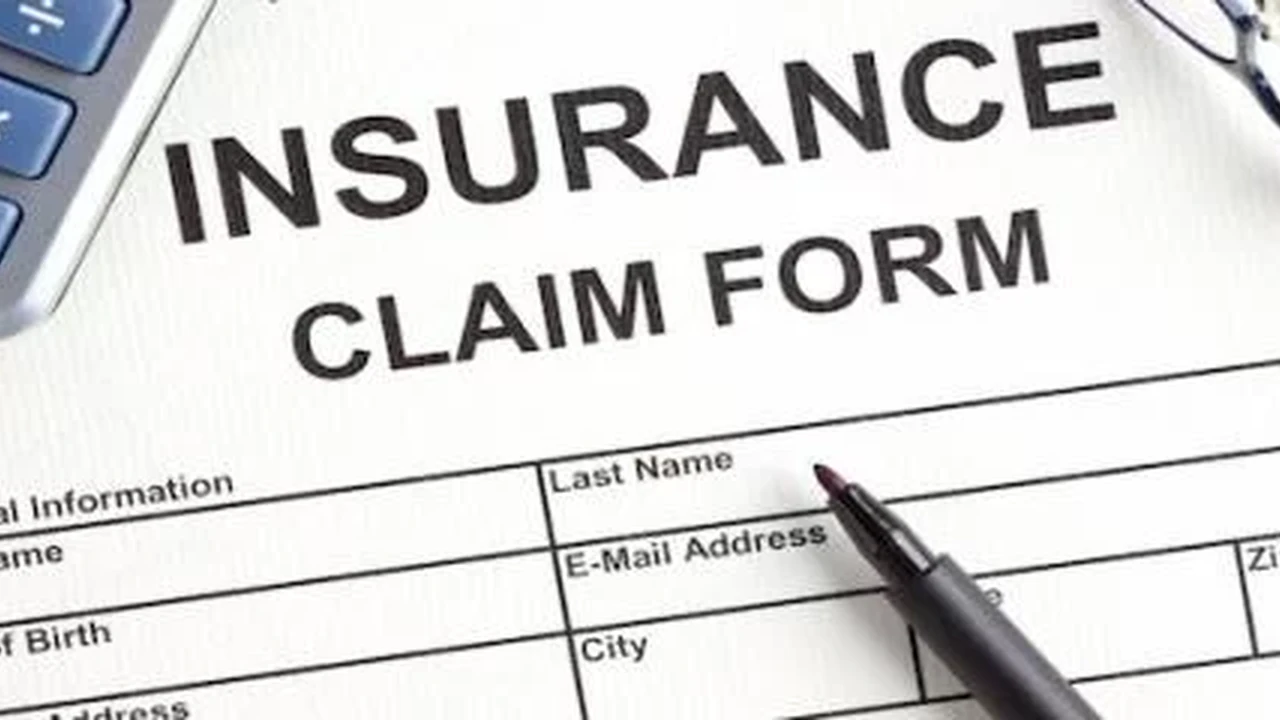Lost Luggage and Travel Insurance: Filing a Claim for Your Belongings

Understanding Travel Insurance Coverage for Lost Luggage Key Considerations
Okay, so you're standing at the baggage carousel, and everyone else has their bags... except you. Panic starts to set in. Lost luggage is a travel nightmare, but thankfully, travel insurance can often be a lifesaver. The first step is understanding what your travel insurance policy *actually* covers. Not all policies are created equal! Some might have very specific exclusions, like only covering losses if the luggage was under the airline's direct supervision (meaning if it was stolen from your hotel room, you're out of luck). Others might have very low coverage limits, which won't even begin to replace your designer handbag or that fancy new camera. Read that fine print, folks! Seriously, before you even *pack* your bags, familiarize yourself with your policy's terms and conditions. Look for keywords like "lost luggage," "delayed luggage," and "personal belongings."
Think about it: your policy should outline:
- The maximum amount you can claim for lost luggage.
- Any deductible you need to pay.
- The required documentation for filing a claim (more on that later!).
- The timeframe for reporting the loss or delay.
Don't assume anything! A quick phone call to your insurance provider before your trip can clarify any doubts and give you peace of mind.
Filing a Lost Luggage Report with the Airline Immediate Steps
Alright, so your bag is officially MIA. The *very* first thing you need to do is report it to the airline. Don't leave the airport without doing this! Head straight to the airline's baggage claim office. They'll have you fill out a Property Irregularity Report (PIR). This report is crucial! It’s your official record that you reported the loss, and your insurance company will *definitely* want to see it. Be as detailed as possible when describing your luggage: the color, size, brand, any identifying marks, and a general list of what was inside. The more information you provide, the better chance they have of finding it.
Make sure you get a copy of the PIR and keep it safe! Also, ask the airline about their policy on delayed luggage. Many airlines will reimburse you for essential items you need to purchase while your luggage is delayed, like toiletries, a change of clothes, and maybe even medications. Get this in writing! Ask them for their contact information and follow up regularly to check on the status of your bag.
Documenting Your Lost Belongings Creating an Inventory
Okay, now for the not-so-fun part: creating an inventory of everything that was in your lost luggage. This is where being organized pays off. If you're like me and tend to just throw things in a suitcase at the last minute, this might be a challenge. Try to remember as much as possible. List *everything*: clothing, shoes, electronics, toiletries, medications, jewelry, documents... everything! Be as specific as you can. Instead of "shirts," list "three t-shirts (one blue, one black, one white), one button-down shirt (striped)."
Include the estimated value of each item. This is where receipts come in handy! If you have receipts for any of the items, include copies with your claim. If you don't have receipts, try to estimate the value based on what you paid for the item originally or what a similar item would cost to replace today. Be realistic! Don't try to inflate the value of your belongings; the insurance company will likely investigate.
Take photos of your belongings *before* you pack! Seriously, this is a great habit to get into. A quick snapshot of your suitcase open with everything inside can be invaluable when you're trying to remember what you packed. If you don't have photos, try to find online listings for similar items to help you estimate their value and provide proof of their existence.
Submitting Your Travel Insurance Claim Essential Paperwork
Now that you have your PIR, your inventory, and a good understanding of your insurance policy, it's time to submit your claim. Follow the insurance company's instructions carefully! Most companies have online claim forms you can fill out. Make sure you have all the required documentation ready to upload:
- A copy of your travel insurance policy.
- A copy of your PIR from the airline.
- Your detailed inventory of lost belongings with estimated values.
- Receipts for any items you're claiming (if you have them).
- Any other supporting documentation, such as photos or online listings.
Be clear and concise in your claim form. Explain what happened, when it happened, and what you're claiming. Don't exaggerate or provide false information. Be honest and accurate. Once you've submitted your claim, keep a copy for your records and follow up with the insurance company regularly to check on its status. Be patient! It can take some time for them to process your claim, especially if it's a complex one.
Understanding Coverage Limits and Exclusions Navigating the Fine Print
Remember that fine print we talked about earlier? This is where it becomes really important. Travel insurance policies often have coverage limits and exclusions that can significantly impact your claim. For example, there might be a limit on the amount you can claim for jewelry, electronics, or other specific items. There might also be exclusions for certain types of losses, such as losses due to negligence or losses that are already covered by another insurance policy.
Pay close attention to these limits and exclusions. If you're traveling with expensive items, you might want to consider purchasing additional coverage to ensure you're adequately protected. Also, be aware of any conditions that could invalidate your claim. For example, if you leave your luggage unattended in a public place, your claim might be denied.
Dealing with Claim Denials Appealing the Decision
Sometimes, despite your best efforts, your claim might be denied. Don't despair! You have the right to appeal the decision. Review the insurance company's explanation for the denial carefully. Do you disagree with their reasoning? Do you have any additional information that could support your claim? Gather any relevant documentation and write a formal appeal letter to the insurance company. Clearly explain why you believe the denial was incorrect and provide any evidence to support your argument.
If you're still not satisfied with the outcome, you can consider filing a complaint with your state's insurance regulator or seeking legal advice from an attorney who specializes in insurance claims.
Top Rated Smart Luggage Options with GPS Tracking and Anti-Theft Features Product Recommendations
Losing your luggage sucks, but tech can help! Smart luggage with GPS tracking and anti-theft features can offer some peace of mind. Here are a few options, with price points (approximate as of today) and usage scenarios:
Away Luggage: The Trendy Traveler's Choice Price $275-$345
Description: Away is known for its sleek design, durable polycarbonate shell, and built-in USB charger (on some models). They also offer a tracking device that can be added to your luggage.
Usage Scenario: Perfect for frequent flyers who appreciate style and functionality. The built-in charger is a lifesaver for long layovers. The optional tracker adds an extra layer of security.
Pros: Durable, stylish, built-in charger (some models), optional tracker.
Cons: Relatively expensive, tracker sold separately.
Samsonite Nuon Spinner: The Reliable Classic Price $200-$300
Description: Samsonite is a trusted brand with a long history of making quality luggage. The Nuon Spinner features a durable hardside shell, smooth-rolling wheels, and an integrated TSA lock. While it doesn't have built-in GPS, it's compatible with aftermarket trackers like Apple AirTag or Tile.
Usage Scenario: A good choice for travelers who want a reliable and durable suitcase at a reasonable price. Adding an AirTag or Tile is an easy way to track your luggage.
Pros: Durable, reliable, reasonably priced, compatible with aftermarket trackers.
Cons: No built-in GPS.
Level8 Gibraltar Aluminum Luggage: The Premium Pick Price $300-$400
Description: Level8 offers premium aluminum luggage known for its durability and sleek design. Their Gibraltar model features reinforced corners, TSA-approved locks, and smooth-rolling wheels. It doesn't have integrated GPS, but like the Samsonite, it can easily accommodate a Tile or AirTag tracker.
Usage Scenario: Ideal for travelers who prioritize durability and security. The aluminum construction can withstand rough handling. Perfect for longer trips and international travel.
Pros: Extremely durable, secure, stylish.
Cons: More expensive than other options, no built-in GPS.
Comparing Smart Luggage Options: Away vs Samsonite vs Level8
The best smart luggage for you depends on your individual needs and budget. Away offers a stylish design and a built-in charger (on some models), but the tracker is sold separately. Samsonite provides a reliable and affordable option that's compatible with aftermarket trackers. Level8 delivers premium durability and security, but it's the most expensive and also requires an aftermarket tracker.
Consider what's most important to you: built-in features, durability, price, or style. Read reviews and compare features carefully before making a decision.
Alternative Tracking Devices: Apple AirTag and Tile Pro Comprehensive Comparison
Even if you don't buy "smart luggage," you can still track your bags using devices like Apple AirTag or Tile Pro. Let's break down the key differences:
Apple AirTag: The Apple Ecosystem Advantage Price $29 (single), $99 (4-pack)
Description: AirTag uses Apple's Find My network to help you locate your belongings. It's small, lightweight, and easy to attach to your luggage. It also offers precision finding if you're nearby.
Usage Scenario: Best for Apple users who are already familiar with the Find My app. The precision finding feature is helpful for locating your luggage in a crowded airport.
Pros: Integrates seamlessly with the Apple ecosystem, precision finding, affordable.
Cons: Only works with Apple devices, requires an iPhone or iPad.
Tile Pro: The Versatile Tracker Price $34.99
Description: Tile Pro is a Bluetooth tracker that works with both iOS and Android devices. It has a longer range than AirTag and a louder alarm.
Usage Scenario: A good choice for users who don't have Apple devices or who want a tracker with a longer range. The louder alarm can be helpful for finding your luggage in a noisy environment.
Pros: Works with iOS and Android, longer range than AirTag, louder alarm.
Cons: Relies on the Tile network, which is smaller than Apple's Find My network.
AirTag vs Tile Pro: Which is Right for You?
If you're an Apple user, AirTag is the obvious choice. The seamless integration with the Find My network and the precision finding feature make it a very powerful tracker. If you're an Android user or want a tracker with a longer range and a louder alarm, Tile Pro is a better option. Both devices are relatively affordable and can provide valuable peace of mind when traveling.
Preventative Measures to Minimize the Risk of Lost Luggage Proactive Steps
While insurance and trackers are great, prevention is even better! Here are some tips to reduce your chances of losing your luggage:
- Use bright-colored luggage or add distinctive markings. This makes it easier to identify your bag and less likely to be mistaken for someone else's.
- Remove old baggage tags. These can confuse baggage handlers and lead to your luggage being sent to the wrong destination.
- Arrive at the airport early. This gives you more time to check in your luggage and ensures that it's loaded onto your flight.
- Take a photo of your luggage before you check it in. This can be helpful if you need to file a claim.
- Pack essential items in your carry-on bag. This includes medications, valuables, and a change of clothes.
- Use a luggage strap. This helps to keep your bag closed and prevents items from falling out if it's damaged during transit.
- Consider shipping your luggage ahead of time. This can be a convenient option if you're traveling with a lot of baggage or if you want to avoid the hassle of checking it in at the airport.
:max_bytes(150000):strip_icc()/277019-baked-pork-chops-with-cream-of-mushroom-soup-DDMFS-beauty-4x3-BG-7505-5762b731cf30447d9cbbbbbf387beafa.jpg)






